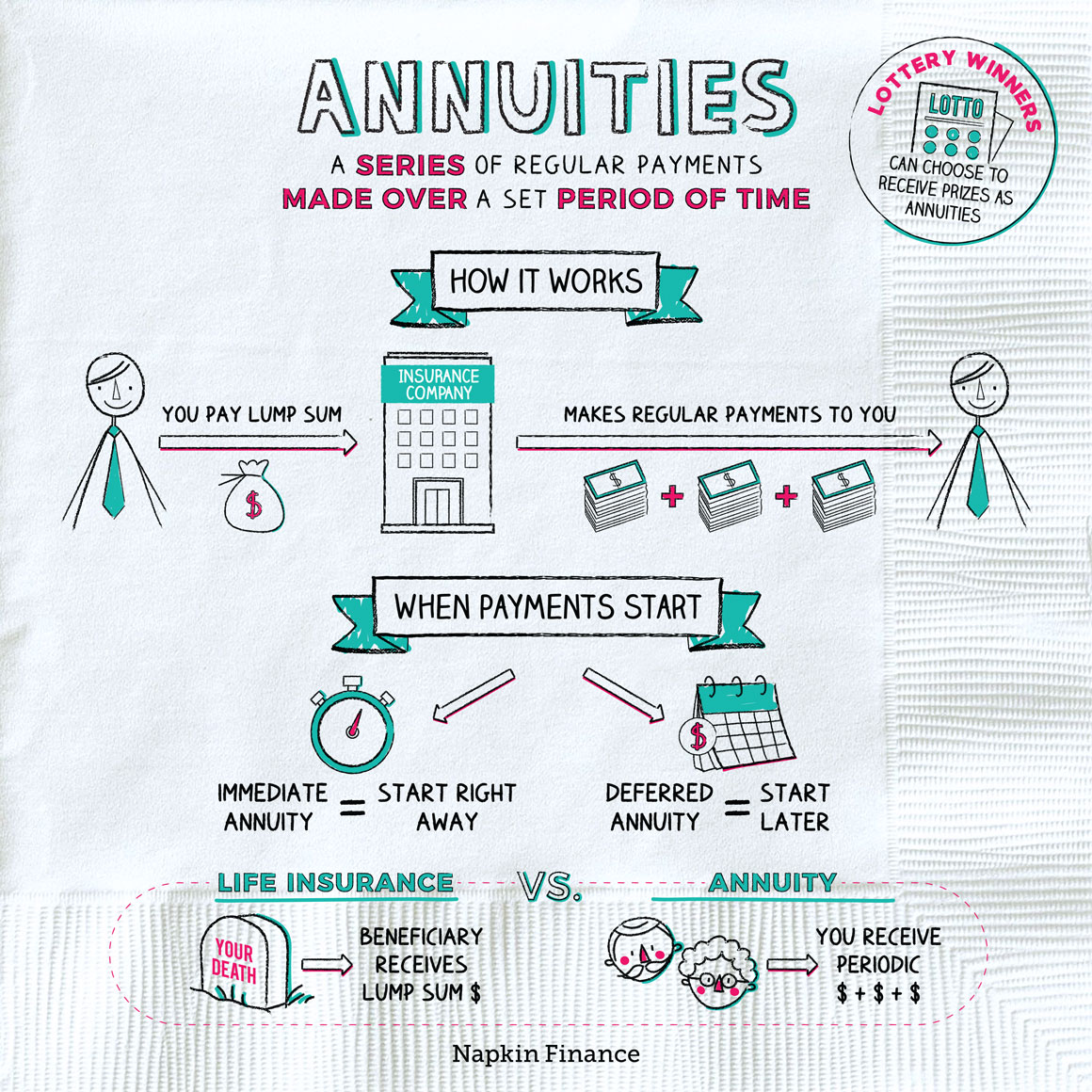All Categories
Featured
Table of Contents

Recognizing the different fatality benefit alternatives within your inherited annuity is important. Meticulously review the contract information or consult with a financial consultant to determine the specific terms and the finest means to proceed with your inheritance. Once you inherit an annuity, you have a number of alternatives for getting the cash.
In some cases, you may be able to roll the annuity into an unique type of individual retirement account (IRA). You can select to receive the whole staying balance of the annuity in a solitary settlement. This choice offers instant access to the funds yet comes with major tax consequences.

If the inherited annuity is a qualified annuity (that is, it's held within a tax-advantaged retirement account), you may be able to roll it over right into a new retired life account (Annuity income stream). You don't require to pay taxes on the rolled over quantity.
Annuity Rates inheritance taxation
Other sorts of recipients typically must withdraw all the funds within ten years of the proprietor's death. While you can not make extra payments to the account, an inherited IRA supplies a valuable benefit: Tax-deferred development. Revenues within the acquired IRA collect tax-free till you begin taking withdrawals. When you do take withdrawals, you'll report annuity revenue in the exact same way the strategy individual would have reported it, according to the IRS.
This option offers a steady stream of revenue, which can be beneficial for long-term monetary planning. Normally, you must start taking distributions no much more than one year after the owner's death.

As a beneficiary, you won't go through the 10 percent internal revenue service early withdrawal penalty if you're under age 59. Trying to determine taxes on an acquired annuity can feel intricate, but the core principle revolves around whether the contributed funds were formerly taxed.: These annuities are funded with after-tax bucks, so the beneficiary generally does not owe tax obligations on the original payments, but any revenues built up within the account that are distributed go through normal income tax obligation.
How does Annuity Rates inheritance affect taxes
There are exceptions for spouses that acquire certified annuities. They can typically roll the funds into their own IRA and postpone tax obligations on future withdrawals. Regardless, at the end of the year the annuity business will certainly submit a Form 1099-R that demonstrates how much, if any type of, of that tax obligation year's circulation is taxed.
These taxes target the deceased's overall estate, not simply the annuity. These taxes typically just impact really large estates, so for many beneficiaries, the emphasis needs to be on the revenue tax obligation ramifications of the annuity. Acquiring an annuity can be a complex yet potentially financially helpful experience. Understanding the terms of the agreement, your payout alternatives and any tax effects is crucial to making informed decisions.
Is an inherited Annuity Income Riders taxable
Tax Treatment Upon Death The tax therapy of an annuity's fatality and survivor advantages is can be rather complicated. Upon a contractholder's (or annuitant's) fatality, the annuity might go through both income taxation and inheritance tax. There are various tax treatments relying on that the beneficiary is, whether the owner annuitized the account, the payment method selected by the recipient, and so on.
Estate Taxes The federal inheritance tax is a very progressive tax (there are numerous tax obligation brackets, each with a higher rate) with rates as high as 55% for huge estates. Upon fatality, the IRS will certainly include all home over which the decedent had control at the time of fatality.
Any type of tax over of the unified credit history is due and payable 9 months after the decedent's fatality. The unified credit will completely shelter reasonably small estates from this tax. So for several clients, estate tax may not be a vital problem. For bigger estates, nevertheless, estate tax obligations can enforce a big problem.
This discussion will concentrate on the inheritance tax therapy of annuities. As held true during the contractholder's life time, the internal revenue service makes an essential distinction in between annuities held by a decedent that remain in the build-up phase and those that have entered the annuity (or payment) phase. If the annuity remains in the accumulation phase, i.e., the decedent has actually not yet annuitized the contract; the full death benefit guaranteed by the agreement (consisting of any kind of enhanced fatality benefits) will certainly be consisted of in the taxed estate.
Do you pay taxes on inherited Annuity Cash Value
Instance 1: Dorothy possessed a fixed annuity agreement released by ABC Annuity Firm at the time of her fatality. When she annuitized the contract twelve years earlier, she selected a life annuity with 15-year duration certain.

That value will be included in Dorothy's estate for tax purposes. Upon her death, the settlements stop-- there is nothing to be paid to Ron, so there is absolutely nothing to consist of in her estate.
2 years ago he annuitized the account selecting a lifetime with money reimbursement payout alternative, calling his child Cindy as beneficiary. At the time of his fatality, there was $40,000 principal remaining in the agreement. XYZ will certainly pay Cindy the $40,000 and Ed's administrator will certainly consist of that amount on Ed's inheritance tax return.
Considering That Geraldine and Miles were married, the advantages payable to Geraldine represent home passing to a surviving partner. Immediate annuities. The estate will certainly be able to make use of the unlimited marital deduction to prevent taxation of these annuity advantages (the worth of the benefits will certainly be noted on the estate tax obligation form, together with a countering marriage reduction)
Are Annuity Death Benefits death benefits taxable
In this case, Miles' estate would include the value of the remaining annuity settlements, but there would be no marital deduction to counter that addition. The same would apply if this were Gerald and Miles, a same-sex pair. Please keep in mind that the annuity's staying worth is identified at the time of fatality.

Annuity agreements can be either "annuitant-driven" or "owner-driven". These terms refer to whose fatality will certainly trigger payment of fatality advantages.
However there are situations in which one person has the contract, and the determining life (the annuitant) is a person else. It would be good to believe that a certain contract is either owner-driven or annuitant-driven, however it is not that basic. All annuity contracts issued considering that January 18, 1985 are owner-driven due to the fact that no annuity contracts issued given that then will certainly be given tax-deferred standing unless it has language that causes a payout upon the contractholder's death.
Table of Contents
Latest Posts
Decoding Fixed Vs Variable Annuity Pros Cons A Comprehensive Guide to Investment Choices What Is Fixed Vs Variable Annuity Pros And Cons? Features of Smart Investment Choices Why Fixed Vs Variable Ann
Understanding Financial Strategies A Closer Look at Fixed Vs Variable Annuity Defining Variable Annuity Vs Fixed Annuity Advantages and Disadvantages of Different Retirement Plans Why Choosing the Rig
Decoding Variable Vs Fixed Annuity Key Insights on Your Financial Future What Is Variable Annuity Vs Fixed Indexed Annuity? Advantages and Disadvantages of Different Retirement Plans Why Choosing the
More
Latest Posts